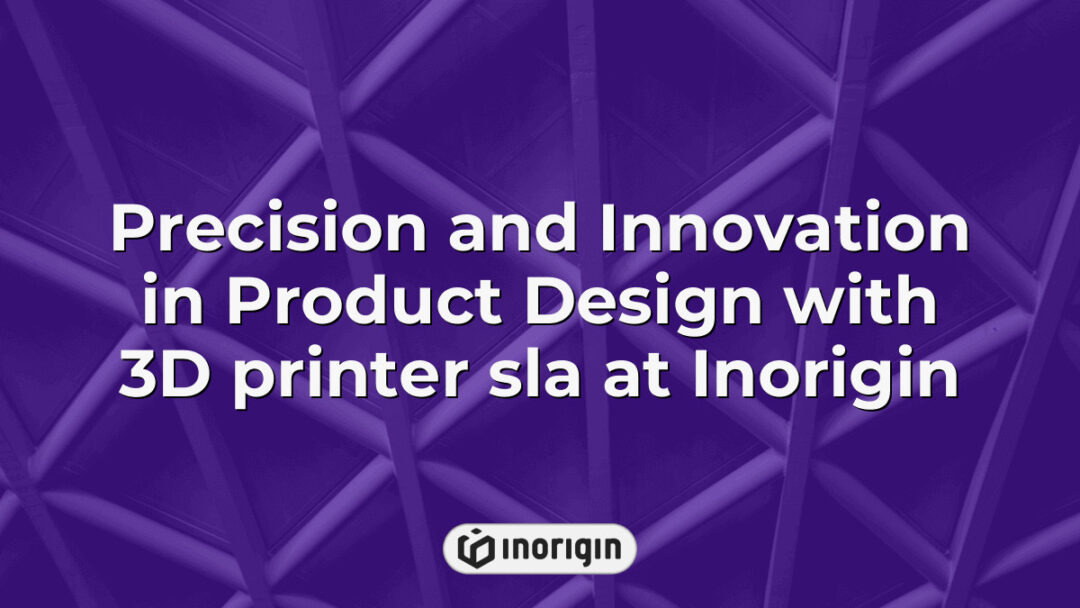In the realm of visual communication, where ideas take flight on the wings of ink and paper, professional printers emerge as the unsung artisans shaping this dynamic landscape. As technological advancements continue to redefine the boundaries of print media, these skilled professionals harness an array of sophisticated tools and techniques to transform digital concepts into tangible realities. The role of a professional printer transcends mere reproduction; it entails a meticulous understanding of color theory, material properties, and production processes that collectively contribute to high-quality outputs. This article delves into the multifaceted nature of professional printing, exploring its significance in various industries and examining the critical skills required for success in this evolving field.
| Αποψη | Key Takeaway |
|---|---|
| Role of a Professional Printer | A professional printer combines advanced technology and expert knowledge to produce precise, high-quality prints vital for industries like product design and engineering. |
| Types of Printers | Common professional printers include inkjet, laser, dye-sublimation, and large-format models, each suited for specific applications such as detailed product prototypes or marketing materials. |
| Βασικά Χαρακτηριστικά | Key features to consider include resolution, paper compatibility, connectivity options, and operational cost efficiency to support seamless production workflows. |
| Βέλτιστες πρακτικές συντήρησης | Regular cleaning, timely replacement of consumables, and controlled operating environments extend printer longevity and maintain output consistency. |
| Handling Specialty Materials | Professional printers are engineered to accommodate diverse substrates and finishes, ensuring accurate color reproduction on specialty papers and materials. |
| Eco-Friendly Innovations | Energy-efficient designs and biodegradable inks offer sustainable printing options without compromising the quality demanded by advanced product fabrication. |
| Troubleshooting Strategies | To minimize downtime, verify supply levels, perform routine maintenance, and consult manufacturer resources for specific error resolutions. |
Understanding Professional Printers: Types And Uses
The realm of professional printing can be likened to an intricate tapestry, where each thread represents a distinct type of printer, interwoven with specific uses and applications. Various types of professional printers exist, including inkjet, laser, dye-sublimation, and large-format printers; each serves unique purposes in diverse industries ranging from photography to commercial advertising. For instance, inkjet printers are celebrated for their ability to produce high-quality color images that capture the nuances of photographs, making them ideal for graphic design studios. In contrast, laser printers excel in producing sharp text documents at high speeds and are commonly utilized in corporate environments where efficiency is paramount. Moreover, specialized equipment such as dye-sublimation printers play a critical role in creating vibrant prints on materials like fabric or ceramic mugs, thereby catering to the promotional product market. Consequently, understanding these various types and their respective functionalities equips businesses and individuals alike to select the most appropriate technology for their specific needs. The landscape of professional printing thus exhibits a rich diversity that underscores its pivotal role in both artistic expression and commercial enterprise.
Key Features To Look For In A Professional Printer
The selection of a professional printer necessitates careful consideration of various features that can significantly affect printing outcomes and operational efficiency. On one hand, high-speed output is essential for meeting demanding deadlines; on the other, print quality must not be compromised in pursuit of speed. Therefore, potential users should prioritize several key attributes when evaluating options. First, resolution determines clarity and detail in printed materials, typically measured in dots per inch (DPI). Second, paper handling capabilities—including capacity, types supported, and finishing options—are crucial for versatility across diverse projects. Third, connectivity features enable seamless integration into existing workflows; this includes wireless technologies and compatibility with multiple operating systems. Fourth, cost-efficiency encompasses both initial investment and ongoing operational costs such as ink or toner consumption and maintenance requirements. By examining these factors closely, organizations can make informed decisions about their professional printing needs while balancing competing demands of performance and economy.
Comparing Print Quality: Professional Vs. Consumer Printers
When evaluating print quality, a significant distinction exists between professional and consumer printers. Primarily, professional printers are designed to meet the rigorous demands of high-volume printing environments while delivering superior resolution and color accuracy. For instance, many professional models utilize advanced inkjet or laser technologies that allow for finer droplet sizes and enhanced color gamuts, resulting in prints that exhibit greater detail and vibrancy compared to their consumer counterparts. Furthermore, the materials used in professional printing processes often include higher-quality inks and specialty papers, which contribute to improved durability and longevity of printed images. Conversely, consumer printers typically prioritize affordability and ease of use over exceptional print quality; hence they may employ less sophisticated technology and lower-grade consumables. Consequently, this difference in design philosophy manifests as noticeable variations in output quality across different applications—where professional tools excel in producing detailed graphics suitable for marketing materials or art reproduction, consumer devices tend to suffice for everyday tasks such as document printing or casual photo outputs. Ultimately, understanding these contrasts is essential for users seeking appropriate solutions tailored to specific printing needs.
Cost Considerations: Budgeting For A Professional Printer
When evaluating the cost considerations associated with budgeting for a professional printer, it is essential to analyze both initial investment and ongoing operational expenses. The upfront costs of professional printers typically exceed those of consumer-grade models, as they are designed to deliver superior performance and durability. Subsequently, maintenance and consumable supplies, such as ink or toner cartridges and specialized paper, contribute significantly to long-term expenditures. Furthermore, factors such as energy consumption and potential repair costs should be incorporated into the overall budgetary framework. As such, a comprehensive financial assessment must account not only for the purchase price but also for these recurring costs that can accumulate over time. Ultimately, understanding the total cost of ownership is crucial for organizations seeking to maximize their return on investment while ensuring high-quality output consistently meets project demands.
Maintenance And Best Practices For Longevity
Maintaining a professional printer requires adherence to best practices that ensure its longevity and optimal performance. For instance, consider the comparison of a professional printer to an athlete; just as athletes require rigorous training regimens and proper nutrition to enhance their performance and extend their careers, printers necessitate regular maintenance routines and careful handling to maximize efficiency. One of the most critical aspects of upkeep involves routine cleaning, which helps prevent dust accumulation and ink residue from impairing print quality. Furthermore, replacing consumables such as toner cartridges and print heads in a timely manner is essential for sustaining operational integrity; data suggests that neglecting these replacements can lead to diminished output quality by up to 30%. Additionally, implementing appropriate environmental controls—such as maintaining stable temperature and humidity levels—can further mitigate wear on internal components. By following manufacturer guidelines regarding usage limitations and recommended service schedules, organizations can effectively prolong the lifespan of their printing equipment while ensuring consistent performance over time. Such diligence not only enhances productivity but also contributes significantly to cost-effectiveness in long-term operations.
Συχνές Ερωτήσεις
What Is The Lifespan Of A Professional Printer?
The lifespan of a professional printer is often perceived as a mere number, yet the reality reveals an intricate tapestry woven from usage patterns, technological advancements, and maintenance practices. Typically, one might envision a robust machine tirelessly producing high-quality prints; however, this idealized image can be misleading. The actual longevity of these printers may vary significantly based on several critical factors:
- Type of Printer: Different technologies (inkjet vs. laser) exhibit distinct lifespans due to their operational mechanisms.
- Frequency of Use: Regular usage tends to enhance durability, while prolonged inactivity could lead to mechanical issues.
- Maintenance Regimen: Adhering to routine cleaning and servicing protocols can extend functionality substantially.
- Environmental Conditions: Temperature fluctuations and humidity levels play pivotal roles in affecting hardware performance.
As such, it becomes apparent that while some professional printers are designed for extensive service periods—often ranging between 3 to 7 years—certain models may endure longer under optimal conditions or succumb prematurely without proper care. Ultimately, understanding these variables allows stakeholders to make informed decisions regarding investment and replacement strategies within professional printing environments.
Can Professional Printers Handle Specialty Papers?
The ability of professional printers to handle specialty papers is akin to a skilled artisan adeptly navigating an array of unique materials, transforming each into a masterpiece. This capability is essential for various applications that demand specific characteristics from the printing medium. Several factors underscore the versatility of professional printers in accommodating specialty papers:
- Paper Thickness – Professional printers are designed to manage varying paper weights and thicknesses, ensuring optimal performance across different substrates.
- Surface Texture – Specialty papers often feature distinct textures that require precise ink application; high-end printers utilize advanced technology to maintain quality regardless of surface variations.
- Finish Types – Glossy, matte, or satin finishes present differing challenges and opportunities for print fidelity, with many professional models equipped to deliver superior results on all types.
- Color Accuracy – The capacity to reproduce vibrant colors accurately on specialty papers enhances the visual appeal and effectiveness of printed materials.
Given these capabilities, it becomes evident that professional printers not only accommodate but also excel at utilizing specialty papers for diverse projects. As such, their design and engineering reflect a commitment to meeting the demands of creative professionals who seek excellence in every aspect of their work.
Are There Eco-friendly Options For Professional Printers?
The quest for eco-friendly options in professional printing has reached a fever pitch, with environmentally conscious consumers demanding sustainable practices from the industry. As awareness of environmental issues escalates, it is essential to explore whether professional printers can meet this burgeoning need while maintaining high-quality output. Numerous manufacturers are now offering printers that utilize biodegradable inks derived from natural resources, such as vegetable oils and soybeans, thus significantly reducing harmful emissions associated with traditional petroleum-based inks. Furthermore, advancements in technology have led to the development of energy-efficient printers that consume less power during operation, thereby minimizing the carbon footprint of printing processes. Additionally, many companies are adopting recycled paper products and promoting closed-loop systems where waste materials are repurposed into new supplies. Collectively, these innovations not only address immediate ecological concerns but also pave the way for a more sustainable future within the printing industry. The integration of eco-friendly solutions demonstrates an evolving paradigm wherein quality and sustainability coexist harmoniously, presenting an array of viable choices for professionals seeking to align their operations with contemporary environmental standards.
What Are Common Troubleshooting Tips For Professional Printers?
Common troubleshooting tips for professional printers are essential for maintaining optimal performance and minimizing downtime. Firstly, it is imperative to ensure that the printer has adequate supplies, such as ink or toner, paper, and other necessary materials. Insufficient resources can lead to malfunctioning equipment and unsatisfactory print quality. Secondly, regular maintenance should be a priority; this includes cleaning print heads, checking for software updates, and examining connections. Such proactive measures prevent many common issues from arising. Lastly, understanding error codes displayed on the printer can facilitate quicker resolutions by guiding users through specific fixes.
Key troubleshooting strategies include:
- Ensuring all cables are securely connected and free of damage.
- Performing routine checks on printer settings to confirm they align with desired output specifications.
- Consulting user manuals or manufacturer websites for insights into particular problems encountered.
Addressing these areas effectively contributes significantly to reducing operational disruptions in professional printing environments. By adhering to established troubleshooting methods, users can enhance both productivity and efficiency within their workflows.
How Do I Choose The Right Ink Or Toner For My Professional Printer?
Choosing the right ink or toner for a professional printer necessitates consideration of several critical factors, including compatibility, print quality, and cost efficiency. Firstly, compatibility with the specific model of the printer is paramount; each printer type is designed to work optimally with certain cartridges that meet its technical specifications. Secondly, assessing print quality involves examining attributes such as color accuracy, resolution, and longevity of prints; high-quality inks and toners yield sharper images and vibrant colors that are essential in professional settings. Additionally, evaluating cost efficiency requires an analysis of both upfront costs and long-term value; while generic alternatives may offer lower initial prices, their performance can vary significantly compared to original manufacturer products. Therefore, making an informed choice entails balancing these elements—compatibility ensures functionality, print quality affects professionalism, and cost considerations influence budgetary constraints—ultimately guiding users toward a decision that meets operational needs effectively.
Σύναψη
The investment in a professional printer significantly impacts print quality and operational efficiency across various industries. Notably, research indicates that businesses utilizing high-quality printers experience up to 30% increased productivity due to faster turnaround times and superior output, underscoring the importance of selecting an appropriate printing solution.
Σχετικές αναρτήσεις:
- Μηχανικά προϊόντα που ενσωματώνει μια εταιρεία χαρτιού για βιώσιμη κατασκευαστική αριστεία
- Thermal Printer Technologies Shaping Precision Labeling and Packaging Solutions
- Engineered Specialty Products Driving Innovation in Precision Design and Manufacturing
- Precision Engineering and Market Impact of Engineered Speciality Products at Inorigin
- Printer free Lifestyle Benefits for Efficient and Sustainable Document Management
- Βιώσιμη καινοτομία και απόδοση του εκτυπωτή Bambu στη σύγχρονη τρισδιάστατη εκτύπωση




